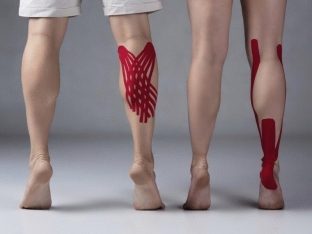Convulsions – this is an unpleasant and even painful phenomenon that causes a lot of trouble and discomfort to a person. They arise suddenly, affecting mainly the muscles on the legs, although they can reduce the jaw, arms, and completely all the muscles in the body (generalized convulsions).
Women suffer much more from spasms in the limbs than the stronger sex. Cramps are clear symptoms of a malfunction in the body. The causes of muscle spasm may be a deficiency of trace elements or rapidly developing diseases. Do not disregard such indicators of life, with frequent muscle lesions, go to the doctor for a consultation.
Read this article about the causes of muscle spasm in the legs and what to do with cramps.
What do seizures signal
Convulsions – These are involuntary muscle contractions that result in discomfort and pain. It seems to a person that the muscle, cramped, has stretched and hardened. In this case, it is very difficult to move the leg. Spasms in the extremities can pass quickly (1-2 minutes), or they can cause trouble for a very long time (10-20 minutes). It can cramp the lower leg, foot, fingers, thigh.
Generalized convulsions are dangerous for a person's life, when spasms of all muscles in the body immobilize a person. Such convulsions are accompanied by loss of consciousness.
Read also: Why leg cramps occur and how to get rid of them
Most often, the cause of seizures is considered to be a violation of the electrolyte and biochemical composition of the blood. A provocateur of blood disorders can be a deficiency of microelements – potassium, calcium or magnesium. Muscle cramps also occur in vitamin D deficiency.
Common causes of seizures:
- lack of vitamins and microelements;
- excessive load on the legs – walking in high heels, playing sports (running, swimming, football), work related to walking (manager, salesman);
- varicose veins, thrombophlebitis;
- low blood glucose levels (hypoglycemia);
- impaired circulation in the lower extremities (during pregnancy, for example);
- osteochondrosis;
- excess estrogen;
- disturbance of the functioning of the cardiovascular system, which leads to insufficient blood supply to the extremities;
- psychic overstrain;
- lack of sleep.

Convulsions in pregnant women and children
Pregnant women often experience cramps already in the last months of bearing a baby. This is due to the fact that the fetus presses on the arteries that supply the limbs with blood. Leg cramps occur against the background of iron deficiency anemia of pregnancy, hypoglycemia, venous insufficiency.
Due to the increase in blood circulation through the vessels in the small pelvis, they have too much load. This can lead to expansion or stretching of the veins, stagnation of blood in the vessels, micronutrient deficiencies and, as a result, to convulsions.
Do not forget that expectant mothers often have vena cava syndrome. The syndrome consists in a violation of blood circulation in a vein under the influence of a rapidly growing uterus. The vena cava is especially strongly compressed in the supine position, which leads to leg cramps.
If seizures become more frequent during pregnancy, you should consult a specialist about what to do with seizures and how to protect yourself from these phenomena.
Convulsions in a child at night should alert parents, they are a good reason to go to the doctor or call an ambulance. Often spasms in the limbs or throughout the body are associated with bone growth. Also, the causes of seizures in children can be:
- hypothermia;
- lack of vitamins and microelements;
- staying in one position for a long time;
- flat feet;
- suffocation;
- head injuries (brain contusion, concussion);
- epilepsy.
What to do with cramps: ways to get rid of discomfort
There are several ways to get rid of cramps that are worth remembering. It is very difficult to predict the moment of occurrence of a spasm. It remains only to find out what to do with convulsions, which often occur.
What to do for seizures
Method 1. Pull the toe towards you, then relax your leg and pull again. If the cramp still persists, try the following method.
Method 2: Stand on your feet and walk barefoot on the cool floor.
Method 3. To make the cramp go away, you can knead the muscle that is tense. Just do it slowly and not too hard.
Method 4. A more radical method is considered to be a needle prick or light pinching.
After the leg is released, it is not recommended to get up immediately, it is better to lie down for several minutes with your legs up. This position will normalize blood circulation in order to avoid a recurrence of convulsions.






Add a comment